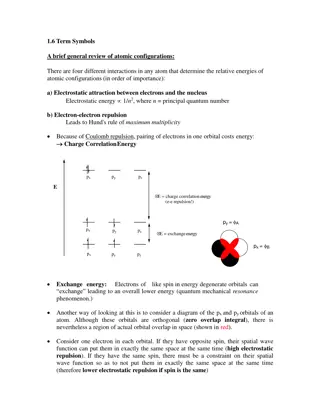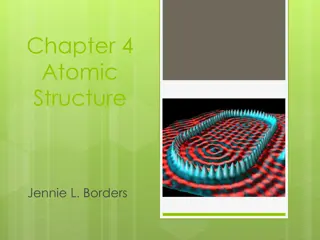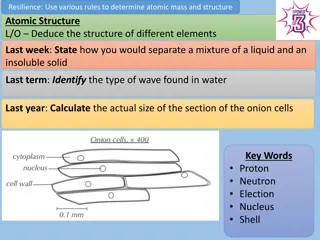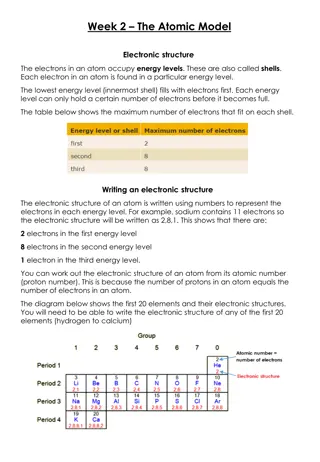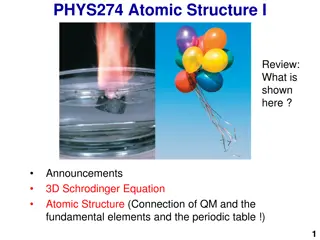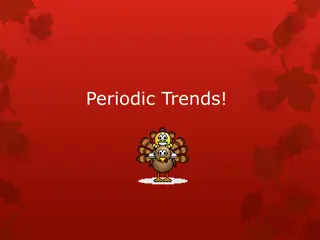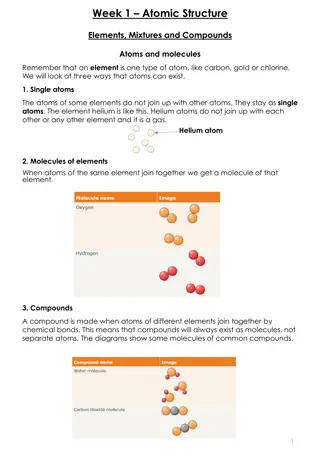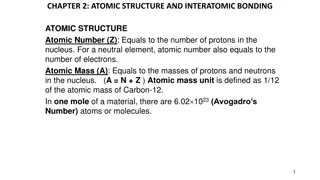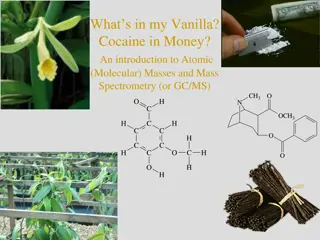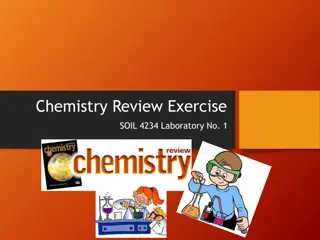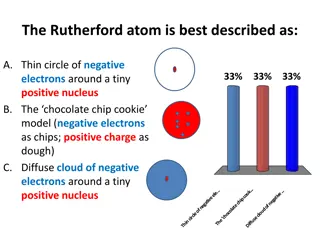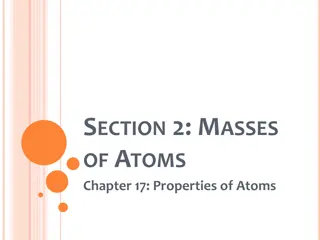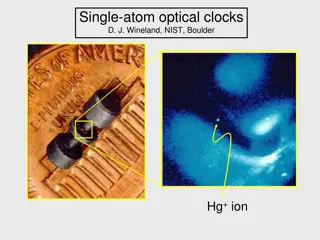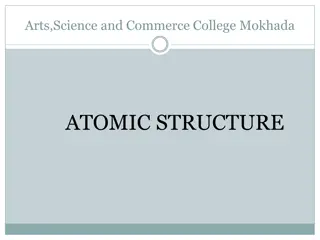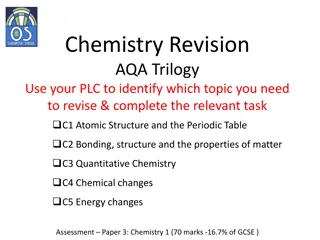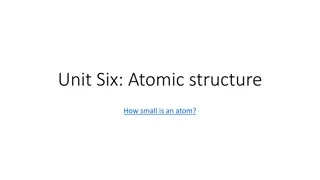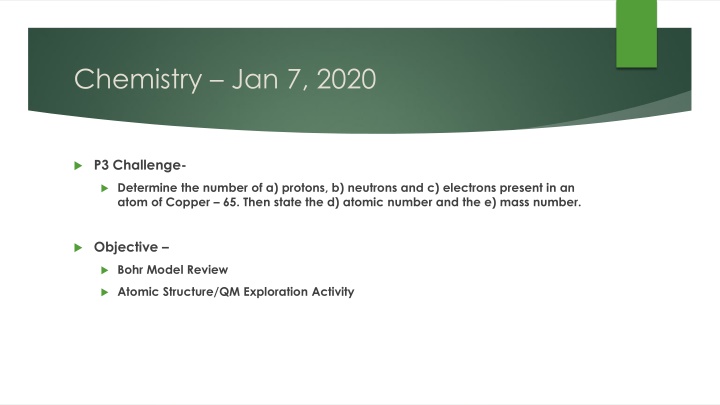
Explore Atomic Structure and Quantum Mechanics in Chemistry Activities
Dive into the world of atomic structure and quantum mechanics through interactive activities, including determining proton, neutron, and electron counts in Copper-65, understanding valence and core electrons, reviewing atomic models, and exploring orbital shapes. Get hands-on with the Bohr model, Quantum Mechanics, and orbital organization to deepen your understanding of fundamental chemistry concepts.
Download Presentation

Please find below an Image/Link to download the presentation.
The content on the website is provided AS IS for your information and personal use only. It may not be sold, licensed, or shared on other websites without obtaining consent from the author. If you encounter any issues during the download, it is possible that the publisher has removed the file from their server.
You are allowed to download the files provided on this website for personal or commercial use, subject to the condition that they are used lawfully. All files are the property of their respective owners.
The content on the website is provided AS IS for your information and personal use only. It may not be sold, licensed, or shared on other websites without obtaining consent from the author.
E N D
Presentation Transcript
Chemistry Jan 7, 2020 P3 Challenge- Determine the number of a) protons, b) neutrons and c) electrons present in an atom of Copper 65. Then state the d) atomic number and the e) mass number. Objective Bohr Model Review Atomic Structure/QM Exploration Activity
Chemistry Jan 7, 2020 Objective Atomic Structure / Quantum Mechanics Agenda Bohr model review with worksheet QM overview and video Orbital Shapes Organization of orbitals via Activity Assignment: Atomic Structure Activity
Valence Electrons / Core Electrons Valence electrons located in the shell with the highest energy level. All other electrons are core electrons. #Valence electrons varies from 1 to 8 with a completed octet most stable 2 valence electrons Highest Energy = 2 4 valence electrons Ex: Mg Highest Energy = 3 Ex: C Number of valence electrons will always match the group A number. Atoms with the same number of valence electrons, that is, elements in the same A group, will have similar reactivity.
Review Atomic models Recall the Nuclear model and where subatomic particles are located Recall the Bohr model that uses quantized orbits Recall Quantum Mechanics that uses quantized orbitals Orbitals that we draw represent a 95% probability of finding an electron in that space. Any single orbital can contain up to two electrons (0, 1, or 2)
Quantum Mechanics Same as Bohr model except for how the energy levels are described. Electrons located in orbitals. Mathematical description is a wave function Schr dinger Explains the wave property of matter. Strategy to understand QM: Learn what the orbitals look like and how they re organized on H atom with activity (today) Populate the orbitals with electrons to describe other atoms using the periodic table (next time)
Shapes of Orbitals Using different shapes is one way QM creates its quantized energy levels. The more complicated the shape, the higher the energy level. Four different basic orbital shapes: s p d f Basic shapes double the number of lobes for each level:
S, P, D, and F Orbitals Image result for d orbitals
Overview Video Orbitals, the Basics: Atomic Orbital Tutorial probability, shapes, energy; Crash Chemistry Academy https://www.youtube.com/watch?v=Ewf7RlVNBSA
Atomic Structure Exploration Activity Obtain a copy of the subshell sheets and an envelope, one set per lab table, a box of colored pencils and a pair of scissors. Complete an activity sheet for each team member. Due by end of period Submit an envelop of your atomic structure pieces labeled with all team member names Work in groups of 3-4 on the Atomic Structure Exploration Activity.
Exit Slip - Homework Exit Slip: What s Due? (Pending assignments to complete.) Atomic Structure Activity What s Next? (How to prepare for the next day) Read Holt p84 - 88

